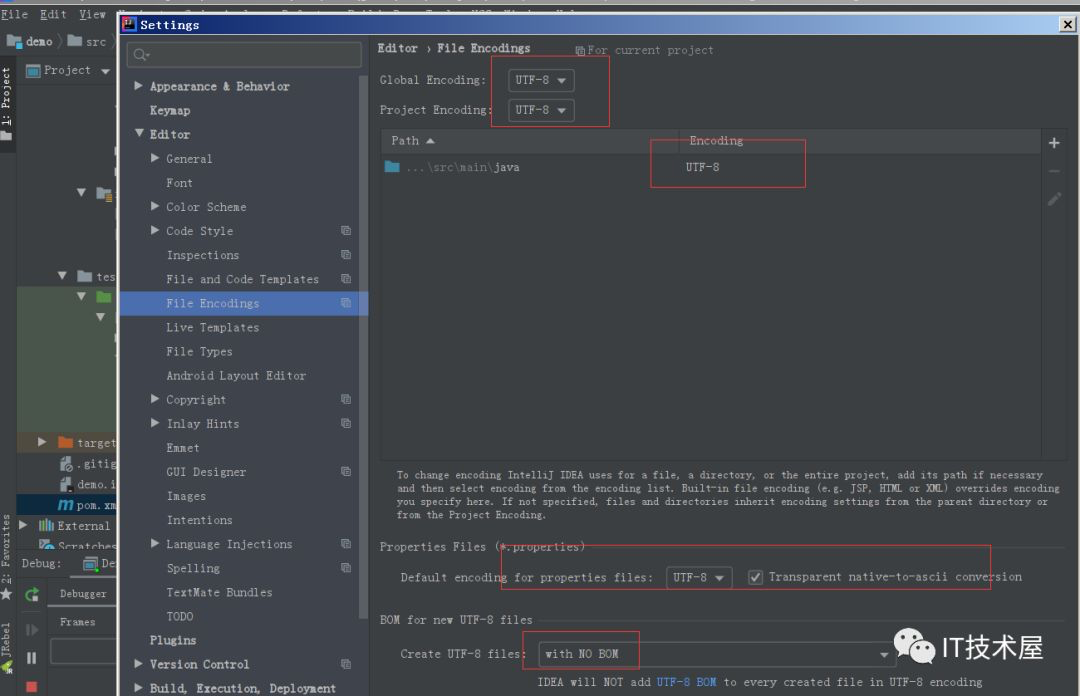springboot系列02:web特性
Web 开发:
常用的 json 输出、filters、property、log等
1、Json 接口开发
使用 Spring 开发项目,需要提供 json 接口时需要做哪些配置?
添加 jackjson 等相关 jar 包
配置 Spring Controller 扫描
对接的方法添加 @ResponseBody
packagecom.example.demo.controller;importcom.example.demo.model.Customer;importorg.springframework.web.bind.annotation.RequestMapping;importorg.springframework.web.bind.annotation.RestController;@RestControllerpublicclassCustomerController {@RequestMapping("/getCustomer")publicCustomer getCustomer() {Customer customer=newCustomer();customer.setUserName("张亮");customer.setPassWord("13128600812");returncustomer;}}上一篇有介绍的!
packagecom.example.demo.model;publicclassCustomer {privateString userName;privateString passWord;publicString getUserName() {returnuserName;}publicvoidsetUserName(String userName) {this.userName = userName;}publicString getPassWord() {returnpassWord;}publicvoidsetPassWord(String passWord) {this.passWord = passWord;}}
2、自定义Filter
在项目中常常会使用 filters 用于录调用日志、排除有 XSS 威胁的字符、执行权限验证等,Springboot 自动添加了OrderedCharacterEncodingFilter 和 HiddenHttpMethodFilter,并且可以自定义 Filter
两个步骤:
实现 Filter 接口,实现 Filter 方法
添加
@Configuration注解,将自定义Filter加入过滤链
packagecom.example.demo;importorg.springframework.boot.web.servlet.FilterRegistrationBean;importorg.springframework.context.annotation.Bean;importorg.springframework.context.annotation.Configuration;importjavax.servlet.*;importjavax.servlet.http.HttpServletRequest;importjava.io.IOException;@ConfigurationpublicclassWebConfiguration {@BeanpublicFilterRegistrationBean testFilterRegistration() {FilterRegistrationBean registration =newFilterRegistrationBean();registration.setFilter(newMyFilter());registration.addUrlPatterns("/*");registration.addInitParameter("paramName","paramValue");registration.setName("MyFilter");registration.setOrder(1);returnregistration;}publicclassMyFilterimplementsFilter {@Overridepublicvoiddestroy() {}@OverridepublicvoiddoFilter(ServletRequest srequest, ServletResponse sresponse, FilterChain filterChain)throwsIOException, ServletException {HttpServletRequest request = (HttpServletRequest) srequest;System.out.println("this is MyFilter,url :"+request.getRequestURI());filterChain.doFilter(srequest, sresponse);}@Overridepublicvoidinit(FilterConfig arg0)throwsServletException {}}}浏览器访问 http://localhost:8080/getCustomer
3、自定义Property
在 Web 开发的过程中,我经常需要自定义一些配置文件,如何使用?配置在
application.properties
com.demo.title=张亮com.demo.phone=13128600812com.demo.description=分享生活和技术数据模型:
packagecom.example.demo.model;importorg.springframework.beans.factory.annotation.Value;importorg.springframework.stereotype.Component;@Component@PropertySource(value="classpath:application.properties")publicclassProperties {@Value("${com.demo.title}")privateString title;@Value("${com.demo.phone}")privateString phone;@Value("${com.demo.description}")privateString description;publicString getTitle() {returntitle;}publicvoidsetTitle(String title) {this.title = title;}publicString getPhone() {returnphone;}publicvoidsetPhone(String phone) {this.phone = phone;}publicString getDescription() {returndescription;}publicvoidsetDescription(String description) {this.description = description;}}请求控制类:
packagecom.example.demo.controller;importcom.example.demo.model.Customer;importcom.example.demo.model.Properties;importorg.springframework.beans.factory.annotation.Autowired;importorg.springframework.beans.factory.annotation.Value;importorg.springframework.web.bind.annotation.RequestMapping;importorg.springframework.web.bind.annotation.RestController;@RestControllerpublicclassCustomerController {@AutowiredprivateProperties properties;@RequestMapping("/getProperties")publicProperties getProperties() {returnproperties;}}浏览器访问 http://localhost:8080/getProperties
{"title":"张亮","phone":"13128600812","description":"分享生活和技术"}若出现乱码情况,可以有以下几种解决方法
将application.properites的文件类型修改为UTF-8的编码类型
#application.properites设置spring-boot 编码格式banner.charset=UTF-8server.tomcat.uri-encoding=UTF-8spring.http.encoding.charset=UTF-8spring.http.encoding.enabled=truespring.http.encoding.force=truespring.messages.encoding=UTF-8
idea中File Encodings的Transparentnative-to-ascii conversion为true,File -> Settings -> Editor -> File Encodings将Properties Files (*.properties)下的Default encodingforproperties files设置为UTF-8,将Transparentnative-to-ascii conversion前的勾选上

4、log配置
1 2 3 4 5 | logging.file = logs/demo.loglogging.pattern.console = %d{yyyy-MMM-dd HH:mm:ss.SSS} %-5level [%thread] %logger{15} - %msg%nlogging.level.com.favorites = DEBUGlogging.level.org.springframework.web = INFOlogging.level.org.hibernate = DEBUG |
-
会在项目路径下创建文件 logs/demo.log ,也可以配置绝对路径;
-
logging.level后面可以根据包路径配置不同资源的 log 级别
分类:
spring boot
标签:
spring




· 分享一个免费、快速、无限量使用的满血 DeepSeek R1 模型,支持深度思考和联网搜索!
· 使用C#创建一个MCP客户端
· ollama系列1:轻松3步本地部署deepseek,普通电脑可用
· 基于 Docker 搭建 FRP 内网穿透开源项目(很简单哒)
· 按钮权限的设计及实现